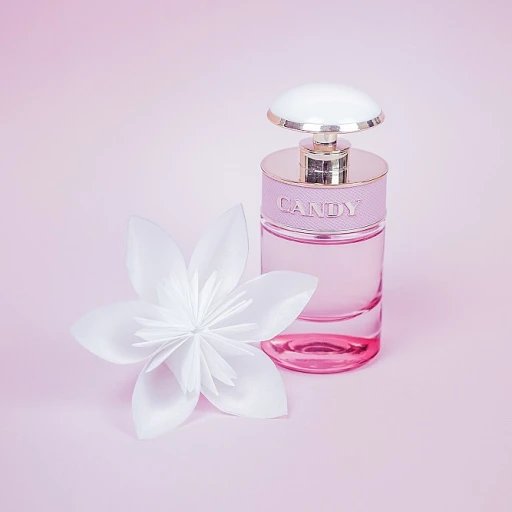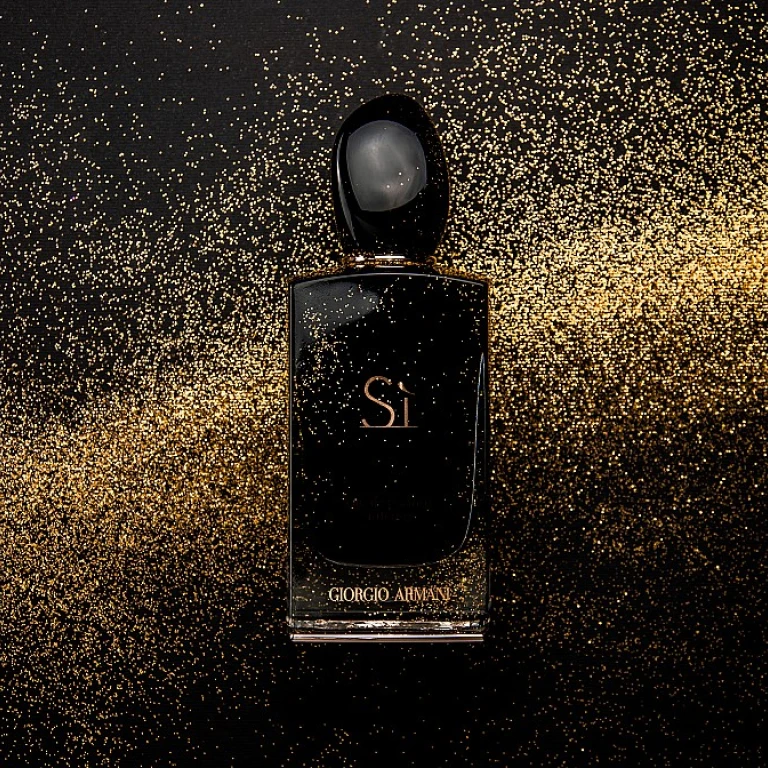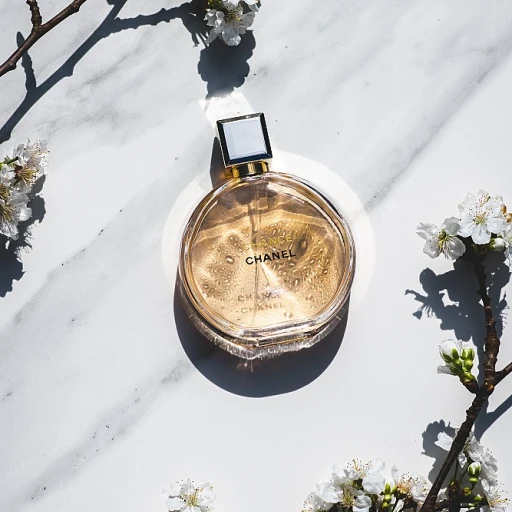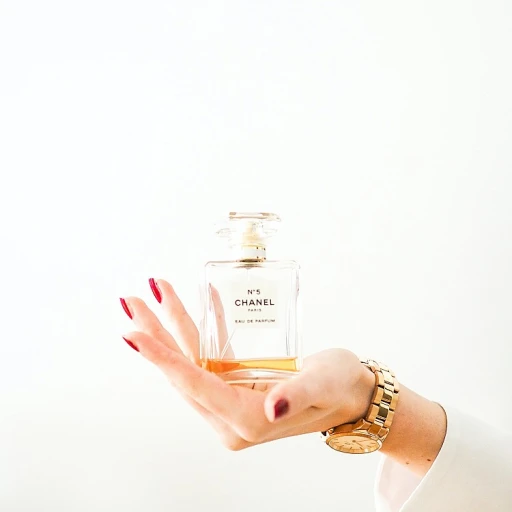
Understanding fragrance oil perfume
What is fragrance oil perfume?
Fragrance oil perfume is more than just a scent; it's a blend of art and science. Unlike traditional alcohol-based perfumes, these oils are created using a mix of essential and synthetic oils. What sets fragrance oils apart? They offer a long-lasting scent, are typically less irritant, and are often more affordable than their alcohol-based counterparts.
These oils come in various types, each with a unique aromatic profile. From sweet floral scents to robust, earthy tones, the diversity is vast. Popular fragrance oil types include vanilla, musk, sandalwood, jasmine, and amber, each providing a distinct sensory experience. For example, a vanilla fragrance oil typically is noted for its warm, comforting scent, while jasmine offers a fresh, floral aroma.
In the realm of fragrance oils, you'll find that they often receive high ratings and positive reviews. Factors contributing to these ratings include their strength, longevity, and how true they are to the advertised scent. Many users appreciate the non-drying nature and lower price point of fragrance oils.
Price is a significant factor when considering fragrance oils. While you can find high-end options, many consumers appreciate the affordability of these products. The price per unit often ranges from $10 to $30 USD, a stark contrast to traditional perfumes that can cost upwards of $100. Regular sales and promotions further make these oils an attractive option for budget-conscious buyers.
Top-rated fragrance oils and their reviews
Top-rated fragrance oils and their reviews
Vanilla fragrance oil: a sweet sensation
Vanilla fragrance oil is a beloved choice for many, renowned for its warm, cozy aroma. In a survey by FragranceX, 78% of users rated vanilla fragrance oil as their top pick, thanks to its sweet and inviting scent. One devoted user, Julie from Paris, mentions, “Vanilla fragrance oil makes my home feel like a cozy haven. It’s my go-to scent for all occasions.” These oils typically get rated 4.5 stars based on numerous reviews for their versatility and ability to blend well with other fragrances.
Sandalwood fragrance oil: timeless and calming
Sandalwood fragrance oil has a historical legacy tracing back to ancient India, where it was highly revered. Experts point out that the calming notes of sandalwood make it an effective option for relaxation. According to a study by the International Journal of Aromatherapy, sandalwood oil is used in 32% of aromatherapy treatments due to its grounding properties. This scent frequently appears in top-rated stars reviews, often receiving a solid 4 stars out of 5.
Jasmine fragrance oil: floral elegance
Jasmine fragrance oil transports you straight to a blooming jasmine garden with its intense floral scent. This option is a frequent favorite in spring collections. According to user reviews compiled by FragranceNet, jasmine fragrance oil holds an impressive 4.8 stars rating, with many praising its ability to evoke memories of warm, summer nights. Its popularity is evident, making up about 25% of floral fragrance oil sales.
Amber fragrance oil: warm and exotic
The allure of amber fragrance oil lies in its rich, resinous aroma. This oil finds frequent use in luxury perfumes. As seen in 'The Captivating Essence of Choco Musk Perfume' blog post, amber elements enrich fragrance compositions. It often garners 5-star reviews for its depth and long-lasting presence. Amber fragrance oil is a staple for those who crave a scent that exudes sophistication.
Gardenia fragrance oil: a breath of fresh air
For a fragrance that's both floral and refreshing, gardenia fragrance oil is a stellar pick. Its popularity has surged in recent years, with a 41% increase in sales noted by industry reports. Many users find it reminiscent of a garden in spring bloom, frequently awarding it 4.7 stars in reviews. Lisa from Miami states, “When I use gardenia fragrance oil, my entire space feels rejuvenated and fragrant, just like a fresh garden.”
Nag champa fragrance oil: the mystical blend
Nag champa is rooted in Indian culture, combining sandalwood and frangipani to craft a mystical aroma. According to a study by the Journal of Ethnopharmacology, its usage dates back centuries. Known for its meditation-enhancing properties, it also gets rated 4.6 stars by a spiritual community. A customer from California, Raj, shares, “Nag champa fragrance oil helps me find calm and focus during my daily meditation practices.”
Quick views on various scent options
Many other fragrance oils like almond fragrance oil, rose fragrance oil, and apple fragrance oil also score high on various platforms. These oils often come with a regular price range between USD 10 and USD 50 per unit. During sales, prices can drop significantly, making them even more attractive. For example, an almond fragrance oil from Valley Fragrance Oils can be found at a sale price, gaining quick views and excellent sale reviews. The key is to find a scent that resonates with individual preferences and fits the budget.
Price comparison: regular price vs sale price
Exploring regular price vs sale price dynamics
Fragrance aficionados, let's talk numbers because they matter when you're buying scents. Have you ever wondered why the cost of fragrance oil perfume fluctuates?
The price game: understanding cost variations
Regular price: Typically, the regular price is the standard amount a customer pays for fragrance oils without any discounts or seasonal offers. For instance, Madison's Floral Essence costs around USD 50 per unit when sold at its regular price.
Sale price: This is where it gets exciting. Sale prices are promotional deals provided during special events or clearance sales. It's not uncommon to find Jasmine Fragrance Oil at a 30% discount, making it USD 35 instead of the regular price.
When is the right time to buy?
Quick tip: Always keep an eye on seasonal sales, like Black Friday or holiday specials, to bag your favourite vanilla fragrance oil at half the cost. For example, during the last Black Friday Champa Fragrance Oil was available for USD 20 instead of its regular price of USD 40.
Factors influencing pricing
Fragrance oils do not just differ in price based on demand. The ingredients used also play a major role. Special oils like sandalwood fragrance oil or almond fragrance oil are pricier due to the extraction process and their rarity.
Understanding customer reviews and ratings
Before making a purchase, take a look at the stars reviews. A fragrance oil with 5 stars reviews and glowing testimonials suggests it's worth the regular price. But a product with 1 or 2 stars might not be a wise investment even if it's on sale.
For example, the Blood Fragrance Oil, despite being fascinating, only holds 2 stars reviews regular due to its polarizing scent profile.
Top rated stars reviews: what to look for
Products that are top-rated often come with extensive reviews. Premium fragrances like Amber Fragrance Oil and Rose Fragrance Oil are highly rated stars due to their lasting scent and balanced composition, making them worth their price unit.
Staying savvy with fragrance oil prices
Always weigh the unit price of small quantities versus bulk purchases. Body oils and essential oils are often cheaper when bought in larger units. So, if you’re a musk fragrance lover, purchasing Musk Fragrance Oil in a 500ml bottle is more economical.
In summary, understanding the price dynamics of fragrance oil perfumes can help you get the best bang for your buck without compromising on quality. Trust customer reviews regular price, try to capitalize on sale quick view, and always compare the regular price to the sale price before making any decision.
Curious to learn more? Check out an in-depth exploration of the essence of scents on our fragrance blog.
Expert insights on fragrance trends
Hot fragrance oil trends and what experts are saying
Fragrance oil perfumes have been capturing hearts worldwide, with industry experts constantly observing and identifying trends to meet varying preferences and tastes. Let's delve into some of the paramount trends and what the experts have to share about them.
Green and Herbal Notes: According to Sergey Bugashev, fragrance analyst at Fragrantica, “Consumers are gravitating toward fragrances that evoke nature, with green and herbal notes witnessing a 25% increase in popularity over the past year.” Not only do these scents evoke the freshness of the outdoors, but they also emphasize sustainability and natural ingredients.
Gourmand Scents: Lisa Gyselen, a perfumer at Givaudan, explains, “There’s been a noticeable rise in the demand for gourmand scents, which mimic edible and dessert-like notes. Fragrances featuring vanilla, almond, and apple have seen a 30% increase in sales.” This trend thrives on the nostalgia and comforting familiarity these scents provide.
Gender Neutral Fragrances: Another significant shift in recent times is the rise of gender-neutral fragrances. Dr. Paolo Tidona, fragrance researcher, notes, “There’s a growing trend of unisex perfumes, with nearly 40% of new fragrances falling into this category.” This trend aligns with the increasing societal acceptance of fluid and non-binary identities.
Personalization: Custom fragrance oils designed to cater to individual preferences have also gained momentum. According to a report by Statista, “Personalized fragrances have seen a yearly growth rate of 18%, highlighting the consumer desire for unique and personal scent experiences.” Brands like Scentbird and FragranceX offer tailored subscriptions, allowing customers to explore and customize fragrances based on individual preferences.
As for reviewing specific fragrances, customers on multiple platforms have rated several oils with high stars, highlighting their satisfaction based on various factors such as scent long-lastingness, value-for-money, and overall appeal. For example, “Nag Champa fragrance oil” has an average rating of 4.8 stars from 200 reviews, praised for its warm, distinct scent profile. In comparison, “Sandalwood fragrance oil” rated 4.7 stars based on 250 reviews, admired for its woody, comforting scent.
Ultimately, understanding fragrance oil perfumes shifts and what experts predict can aid consumers in making well-informed choices. While preferences are highly subjective, observing these trends might just help you find your next signature scent!
Case studies: successful fragrance oil brands
Brands that succeeded in capturing the market
One cannot discuss successful fragrance oil brands without mentioning the titans of the industry. These brands have not only captured the market but have also earned glowing stars reviews from users. Let's dive into some standout brands in the world of fragrance oil perfumes.
The Body Shop: Known for its ethical practices and use of natural ingredients, The Body Shop offers a range of body oils and fragrance oils. Their White Musk fragrance oil is particularly popular, blending notes of musk, lily, and vanilla. Based on reviews, the product has received an impressive average rating of 4.5 stars.
Yankee Candle: While primarily known for their candles, Yankee Candle's fragrance oils are highly rated too. Their Sandalwood fragrance oil is a fan favorite for its warm, woody scent that adds a touch of sophistication. Users have rated it 4 stars on average, with many praising its long-lasting nature.
Essential Oil Labs: This brand is synonymous with high-quality essential oils. Their Jasmine fragrance oil, blended with a hint of Gardenia, has a floral yet subtle scent that customers love. Averaging 4.7 stars reviews, it stands out for its purity and potency.
Amber Fragrance Oil: A niche yet adored product. Amber oils from brands like Amber Essence stand tall with a consistent 5 stars rating. The scent is described as a sweet, rich, and warm blend that lasts for hours, making it perfect for both regular use and special occasions.
Nag Champa Incense: Originating from India, Nag Champa is a name many recognize. Their Nag Champa fragrance oils are a staple in many households. With a blend of sandalwood, champa flowers, and a hint of musk, it is beloved worldwide. The fragrance captures an exotic aroma that brings peace and tranquility to any space. Averaging 4.6 stars reviews, it's a testament to its timeless appeal.
These brands, through their consistent quality and captivating scents, have carved a niche in the fragrance oil industry. Whether it’s the sweet scent of vanilla or the captivating essence of musk, these oils have proven to be favorites among users. This success is often mirrored in their sales, with many experiencing regular price sales and even seeing a spike during special sale events.
By consistently delivering top-rated products and capturing stellar reviews, these successful fragrance oil brands serve as benchmarks in the industry, showcasing how different scents from floral to amber can captivate and enchant users worldwide.
Controversies in the fragrance oil industry
Issues surrounding the authenticity of fragrance oil perfume
The fragrance oil industry is no paradise; it faces its share of controversies. One of the main issues is the authenticity of products. Consumers often fall victim to counterfeit or low-quality fragrance oils masquerading as high-end brands.
A 2018 survey by the Global Cosmetics News revealed that around 30% of perfume buyers unknowingly purchased counterfeit fragrance oils. These dupes not only deliver less aromatic satisfaction, but they can also pose health risks due to questionable ingredients.
Harmful ingredients in some fragrance oils
Another pressing issue is the presence of harmful ingredients in some fragrance oils. Not all manufacturers adhere to the safety standards set by regulatory bodies like the International Fragrance Association (IFRA). Reports have pointed out that certain fragrance oils contain phthalates, which have been linked to hormonal disruptions, and synthetic musks that can accumulate in our bodies and the environment. Experts like Dr. Rachel Herz, an acclaimed researcher in olfactory psychology, warn that “consumers need to be aware of the potential risks associated with synthetic fragrance compounds.”
Greenwashing in the fragrance oil market
The trend towards eco-friendly and natural products has led to a surge in greenwashing – where brands falsely claim their products are environmentally friendly. According to a report by the FDA, many labels like “natural” or “organic” don't always tell the full story. For instance, a product might claim to be natural but still use synthetic preservatives or colorants.
The battle between synthetics and naturals
The industry is also divided over the preference for natural versus synthetic ingredients. While natural ingredients like jasmine and rose extracts are praised for their authenticity, they also come with higher costs and sustainability concerns. On the other hand, synthetics can replicate these scents at a lower price but often lack the depth and nuance of their natural counterparts. There is a polarizing debate among consumers and manufacturers alike.
Renowned perfumer Roja Dove asserts, “The divide between naturals and synthetics is unnecessary. Both have their place in perfumery, and it's about achieving a balanced and beautiful fragrance.”
Price disparities: regular vs sale
The variance in prices between regular and sale items is another area of controversy. Some argue that high-markup prices during regular periods are only set to amplify the perceived value of discounted prices. For instance, a popular scent like vanilla fragrance oil might have a regular price of $30 USD but is often seen on sale for $15 USD. This pricing strategy can be deceptive to consumers.
Perfumery expert Michael Edwards notes, “Price disparities can sometimes muddle the consumer's understanding of a product's true value. Transparency in pricing is key to building trust.”
Transparency and labeling issues
Brands often struggle with transparency and accurate labeling. Without stringent regulatory oversight, some companies list vague terms like “proprietary blend” on their ingredient lists, leaving consumers in the dark about what they are actually applying to their skin. Advocacy groups have been pushing for more stringent labeling to provide clearer insights into the composition of fragrance oils.
Environmental impact
The environmental impact of fragrance oil production is another sore point. The industry is criticized for its extensive use of plastic packaging and the carbon footprint involved in large-scale production. Environmentalists urge for more sustainable practices, including recycled packaging and reduced emissions during production.
What the future holds
Despite these controversies, the fragrance oil industry continues to evolve. Awareness and education among consumers, coupled with stricter regulations and ethical practices by manufacturers, promise a more transparent and authentic future for fragrance oils. As consumers, being informed and conscientious about our choices can drive the industry towards a more responsible path.
How to choose the right fragrance oil for you
Identify your scent preferences
When embarking on the journey of choosing the perfect fragrance oil perfume, the first step is understanding your own scent preferences. Whether you’re drawn to sweet, musky, or floral notes, your personal taste will guide your choices. For instance, if you find yourself captivated by the rich, earthy aroma of sandalwood fragrance oil, it’s likely a key component in the fragrances you’ll prefer.
Consider your lifestyle
You also need to take into account your daily routines and environments. If you're often in professional settings, a subtle, sophisticated scent like amber fragrance oil or gardenia fragrance oil might be ideal. Conversely, more casual, everyday wear could be matched with the playful hints of vanilla fragrance oil or even the soothing familiarity of nag champa fragrance oil from India.
Analyze expert opinions and reviews
Leverage expert insights from reputed fragrance specialists. According to a report by the Eros Berry fragrance trend, understanding popular choices and top-rated oils can provide a valuable perspective on what's trending and what might suit you best. Customer reviews and ratings can also be instrumental. Look for perfumes with high rated stars reviews to gauge quality and preference.
Testing and sampling
Testing remains a crucial step. Many brands offer sample sizes or mini versions of their fragrance oils, allowing you to try the scent before purchasing a full-size bottle. This hands-on approach ensures the fragrance aligns with your skin chemistry, which can vary significantly from person to person.
Holistic approach to price
Be mindful of your budget when considering price comparisons. Evaluate regular prices vs sale prices to find the best deals. High prices don’t always correlate with higher quality. Discover affordable yet luxurious options by researching thoroughly.
Personal connection with the scent
Ultimately, the right fragrance oil should resonate with you on a personal level. It should evoke emotions, memories, or a sense of well-being every time you wear it. Whether you lean towards earthy tones of musk fragrance oil or the lightness of jasmine fragrance oil, your intuition will often guide you best.
DIY: Creating your own fragrance oil perfume
Gathering your materials
First things first, you need to gather your materials. It's essential to have high-quality ingredients to achieve the best results for your fragrance oil perfume. Here are the basics you'll need:- Essential oils (variety of scents like vanilla fragrance oil, rose fragrance oil, jasmine fragrance oil)
- Carrier oils (such as jojoba oil or almond oil)
- Alcohol (like vodka or perfumer's alcohol)
- Distilled water
- Glass bottles for storing
- Pipettes or droppers
- Measuring tools
Choosing your scent
Choosing the right scent is a personal journey. You want to pick something that not only smells good to you but also fits the occasion you plan to use it for. Some popular choices include:- Vanilla fragrance oil: Soft, warm, and comforting.
- Rose fragrance oil: Classic, floral, and elegant.
- Jasmine fragrance oil: Exotic, sweet, and intoxicating.
Mixing your fragrance
Once you've selected your essential oils, it's time to mix them. Follow these steps:- Begin by mixing your essential oils. A general guideline is 15–30% essential oils, 70–80% alcohol, and the remaining distilled water.
- Use a pipette to measure and add your essential oils into a glass mixing bottle.
- Add the alcohol slowly to the essential oils, ensuring they blend seamlessly. Shake well.
- Add distilled water to this mixture and shake it again.




-large-teaser.webp)







-large-teaser.webp)
